The Marionettes of Donald Cordry
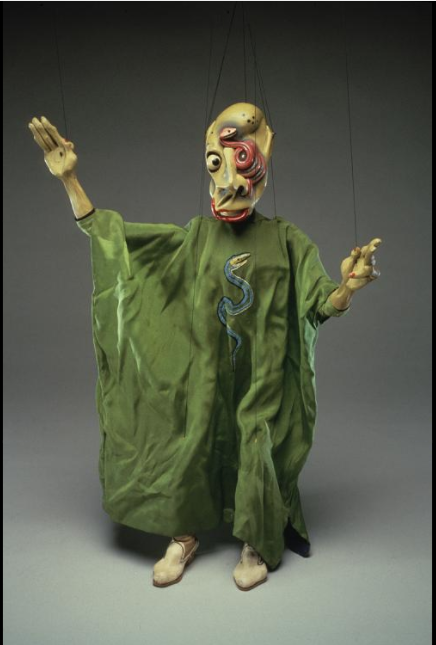
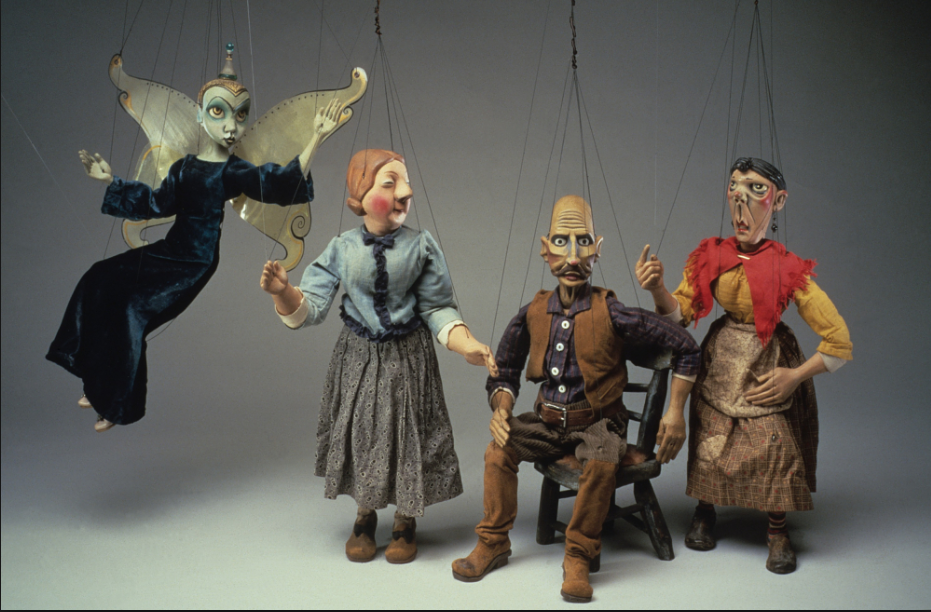
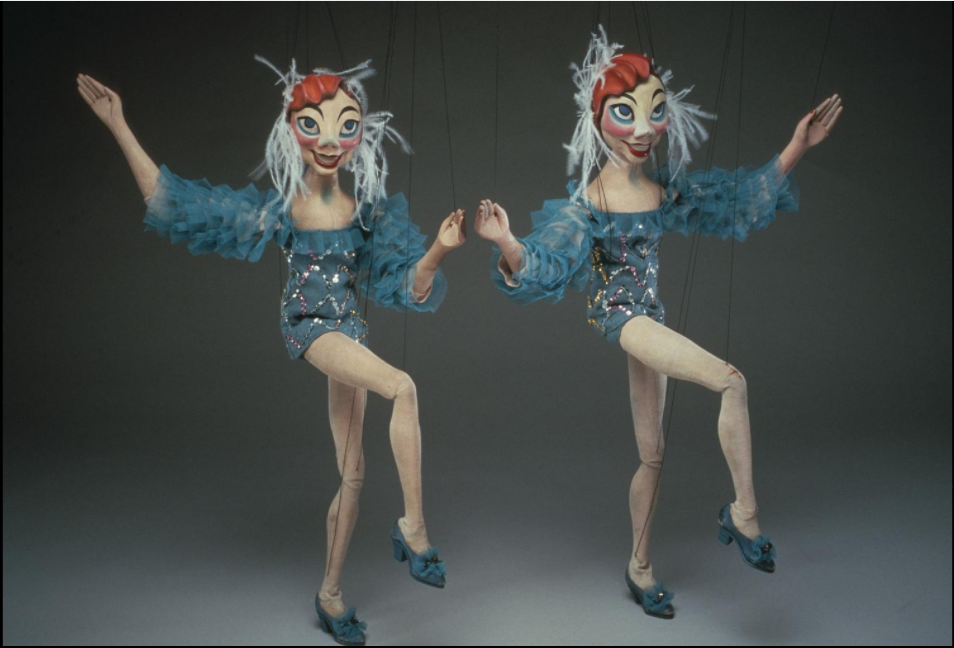
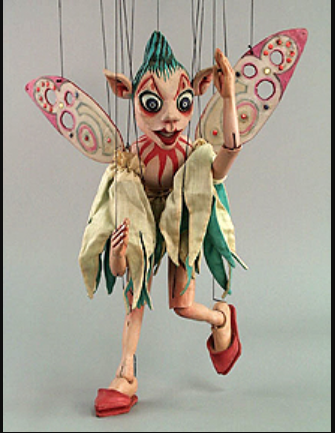
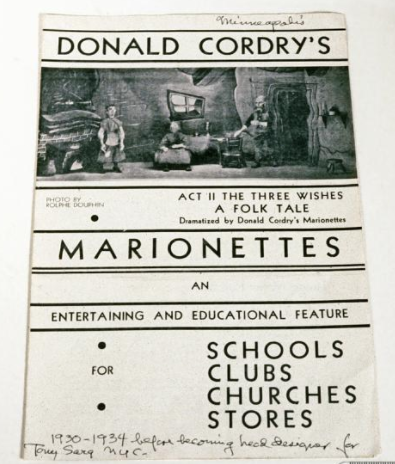
The green fairy is one of four marionettes used by Donald Cordry in his production of "The Three Wishes" that played in Minneapolis between 1930-1934. "The Three Wishes" was first written as a play for puppets by German writer Fronz von Pocci around 1900 and continues to be a popular play performed in many versions. Hand carved from wood, the fairy has an ethereal green painted face with joined eyebrows, black lips, large eyes with some hint of Asiatic features. She wears a clear blue glass pagoda head ornament in her golden hair , and she is wearing a long blue-green velvet dress, with beige tights,and rhinestone shoes with leather heels. Her wings are made of plastic. These charming carved and painted marionettes are great examples of Cordry's decorative sense of design and craftsmanship. The angel is operated with an airplane holder and eight strings.
The Three Wishes was first written as a play for puppets by German writer Fronz von Pocci around 1900. Donald Cordry (1907-1978) was a well known and highly respected American artist, craftsmen and puppeteer of the 1920s and 30s. He was gifted with a great decorative sense and his craftsmanship was extraordinary. Born in Minnesota, Cordry attended the Minneapolis School of Art from 1924-1929 and after graduation he went to work for the Board of Education. While his main job was to lecture and teach classes, Cordry took used the opportunity to create and perform his own marionette show with both hand puppets and marionettes. From late 1930 to early 1931 Cordry joined the Rufus Rose Company, owned by Rupert and Margo Rose that played the school and college circuit on the East coast. In the summer of 1931 he traveled to Mexico where he developed a life long interest and dedication to the arts and landscape of Mexico. An avid collector of ethnographic material for over 40 years, Cordry amassed a large collection of indigenous Mexican arts and crafts which he meticulously documented and researched. His passion also included Native American cultures, and in the mid 1930s he worked at the Heye Museum of Indian Art in New York City where he cataloged and researched objects for the museum. (The Smithsonian's National Museum of Natural History owns a large collection of Mexican masks donated by the Cordry family in the early 1980s.) After returning to Minneapolis in late 1931, Cordry started creating his own puppets. He formed his own company and performed shows until 1934.
The Dolly Sisters and the Three Wishes were popular with young and old audiences alike. In June of 1934, Cordry moved to New York and worked with Tony Sarg, a well known and established puppeteer in his own right, and taught classes at Sarg's Summer School. Cordry made a number of puppets for Sarg and toured with his company from 1934-1936. By 1937 poor health forced him to give up puppetry and he moved to Mexico. He did however, continue his field research on indigenous peoples and later on published two books - Mexican Indian Costumes (1968) and Mexican Masks (c1980). "The Three WIshes" was Cordry's final production before he moved to Mexico with his wife. The puppets and sets from this production were shipped in crates to Mexico and remained there almost fifty years. In 1982, his widow Dorothy Mann Cordry donated this collections to the Smithsonian which included not only the marionettes, but props made to scale and a fully operational puppet stage.
Comments
We still have a big presence of puppetry in Minneapolis. We have the Heart Of The Beast Puppet and Mask theater. While this was not inspired by Cordry, I'm sure he would have approved. They have a big parade down Lake Street in Minneapolis which gets a huge attendance.
Posted by mjbird on 10/15/18 at 07:18 AM
I've always believed that puppets / marionettes are really subversive forms of social comment. As caricatures of people, it's hard to take seriously anything they may say during a performance.
Posted by KDP on 10/15/18 at 10:37 AM
I did a search on marionettes in "The Sound of Music" and ended up with this?
https://vimeo.com/294378241
https://vimeo.com/294378241
Posted by BMN on 10/15/18 at 12:24 PM
BMN: Wow.
Posted by ges on 10/15/18 at 08:27 PM
KDP: you're not wrong, there. A real Punch and Judy show is subversive. Make men, women, children, animals and the authorities look like madmen and fools - that's the way to do it!
Posted by Richard Bos on 10/20/18 at 01:02 PM
Commenting is not available in this channel entry.

Category: Art | Design and Designers | Puppets and Automatons | 1930s